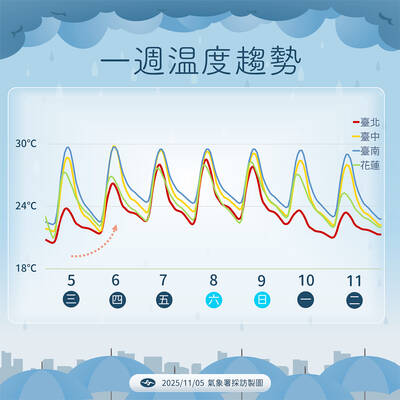Telecommunications giant Chunghwa Telecom Co yesterday held a ceremony to celebrate the completion of its first submarine cable system between Taiwan and China.
Telecommunications companies from both sides of the strait invested a total of NT$200 million (US$6.66 million) to construct the cable system that runs between Taiwan’s Kinmen County and China’s Xiamen City.
Chunghwa Telecom put in NT$100 million, while three major Chinese telecoms companies — China Telecom, China Unicom and China Mobile — provided the remaining funds.
The submarine system, which took 16 years to build, is the first of its kind and will make it easier to build similar projects, Minister of Transportation and Communications Mao Chi-kuo (毛治國) said at the celebrations.
The government holds the biggest stake in Chunghwa Telecom.
With regard to external telecommunications, cross-strait communications ranks in first place.
With telecommunications demand between the two sides growing rapidly, completion of the cross-strait cable system could not have been more timely, Chunghwa Telecom chairman Lu Shyue-ching (呂學錦) said.
The Kinmen-Xiamen submarine cable project was launched in 1996, after top-ranking officials from Taiwanese and Chinese telecommunications companies held a meeting about the project in Taiwan, Lu said.
The system consists of two cables, one of 11km that runs directly between Kinmen’s Lake Tzu and Xiamen’s Guanyin Mountain, and a 9.7km cable that runs between Kinmen’s Guningtou (古寧頭) and Xiamen’s Dadeng Island (大嶝島), Lu said.
The non-repeater submarine cable system has a bilateral transmission capacity of 90 Gigabits per second (Gbps), with Chunghwa Telecom allocating 90 Gbps bandwidth from the Taiwanese side and the three Chinese companies receiving 30 Gbps each.
Depending on demand, the bandwidth might be expanded in the future, Lu said.
He said the company is building three other cable systems in the region, with the aim of becoming a telecommunications leader in the Asia-Pacific region.
They are the Taiwan Strait Express, another cross-strait submarine cable; the South-East Asia Japan Cable System; and the Asia-Pacific Gateway, which is to link Taiwan, China, South Korea, Malaysia and Vietnam, Lu said.
The projects are expected to be completed by the end of 2014, he said.

Three Taiwanese airlines have prohibited passengers from packing Bluetooth earbuds and their charger cases in checked luggage. EVA Air and Uni Air said that Bluetooth earbuds and charger cases are categorized as portable electronic devices, which should be switched off if they are placed in checked luggage based on international aviation safety regulations. They must not be in standby or sleep mode. However, as charging would continue when earbuds are placed in the charger cases, which would contravene international aviation regulations, their cases must be carried as hand luggage, they said. Tigerair Taiwan said that earbud charger cases are equipped

Foreign travelers entering Taiwan on a short layover via Taiwan Taoyuan International Airport are receiving NT$600 gift vouchers from yesterday, the Tourism Administration said, adding that it hopes the incentive would boost tourism consumption at the airport. The program, which allows travelers holding non-Taiwan passports who enter the country during a layover of up to 24 hours to claim a voucher, aims to promote attractions at the airport, the agency said in a statement on Friday. To participate, travelers must sign up on the campaign Web site, the agency said. They can then present their passport and boarding pass for their connecting international

UNILATERAL MOVES: Officials have raised concerns that Beijing could try to exert economic control over Kinmen in a key development plan next year The Civil Aviation Administration (CAA) yesterday said that China has so far failed to provide any information about a new airport expected to open next year that is less than 10km from a Taiwanese airport, raising flight safety concerns. Xiamen Xiangan International Airport is only about 3km at its closest point from the islands in Kinmen County — the scene of on-off fighting during the Cold War — and construction work can be seen and heard clearly from the Taiwan side. In a written statement sent to Reuters, the CAA said that airports close to each other need detailed advanced

UNKNOWN TRAJECTORY: The storm could move in four possible directions, with the fourth option considered the most threatening to Taiwan, meteorologist Lin De-en said A soon-to-be-formed tropical storm east of the Philippines could begin affecting Taiwan on Wednesday next week, the Central Weather Administration (CWA) said yesterday. The storm, to be named Fung-wong (鳳凰), is forecast to approach Taiwan on Tuesday next week and could begin affecting the weather in Taiwan on Wednesday, CWA forecaster Huang En-hung (黃恩鴻) said, adding that its impact might be amplified by the combined effect with the northeast monsoon. As of 2pm yesterday, the system’s center was 2,800km southeast of Oluanbi (鵝鑾鼻). It was moving northwest at 18kph. Meteorologist Lin De-en (林得恩) on Facebook yesterday wrote that the would-be storm is surrounded by